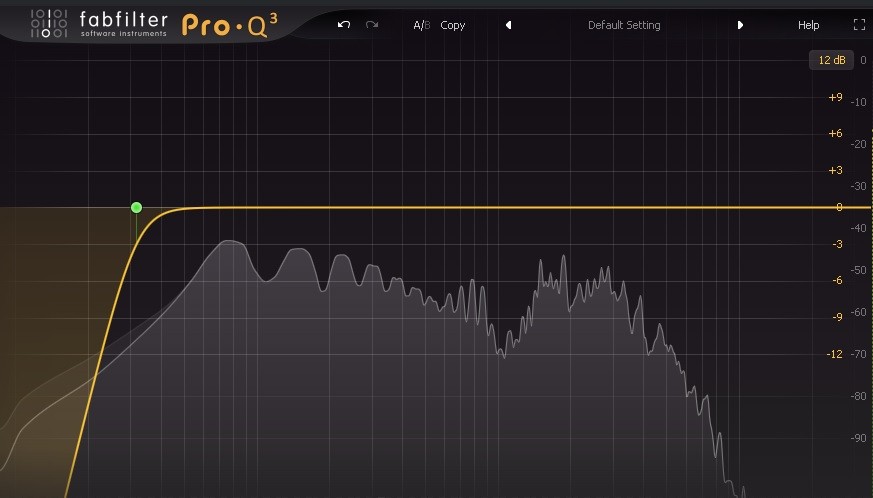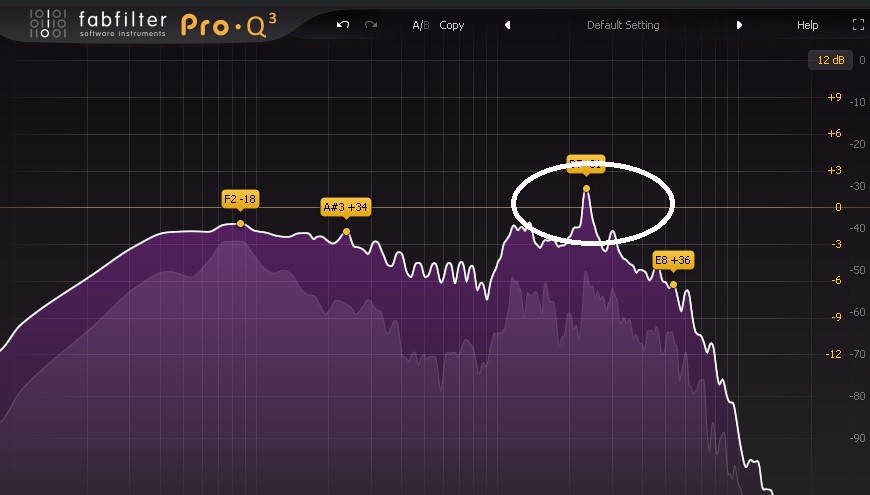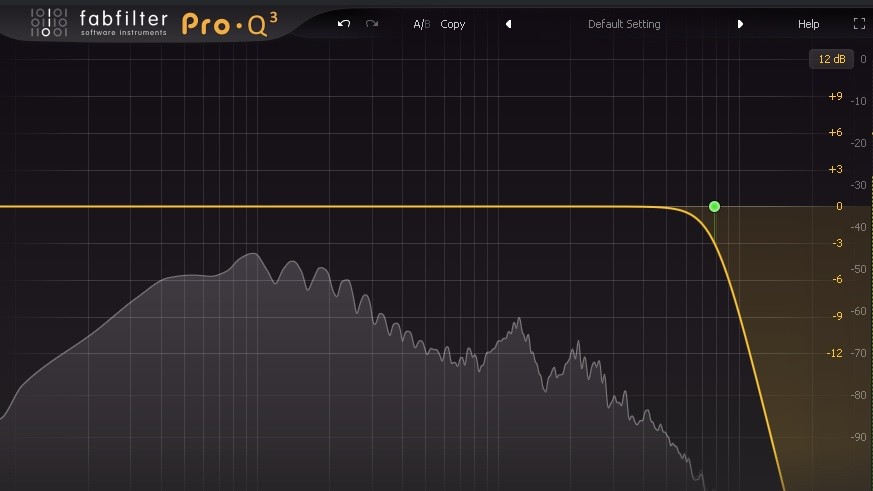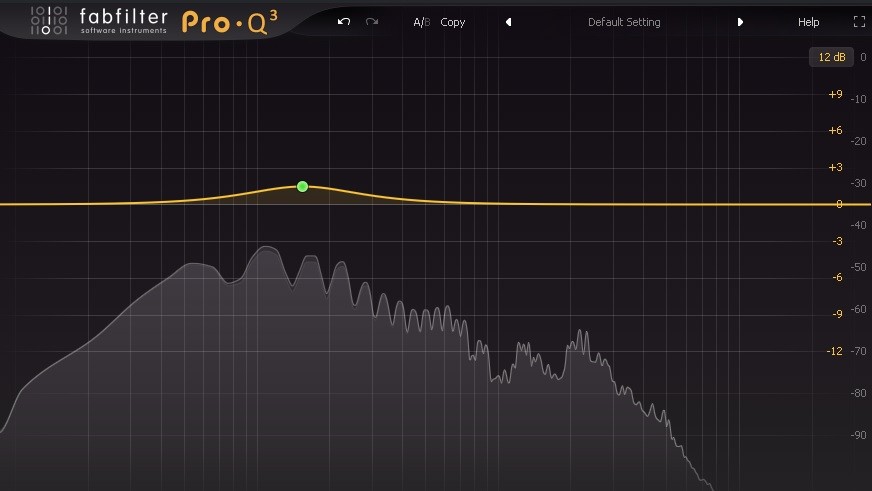The bass guitar provides the foundational low-end frequencies for a song, and getting the EQ settings right is crucial for a well-mixed track.
If the bass isn't mixed properly, the entire song can sound weak and unbalanced.
Fortunately, EQing bass guitar doesn't have to be complicated, and this post will explain how.
How to EQ Bass Guitar (Punch & Clarity)
In a world where music consumers have subwoofers in their homes, there is a strong demand for more bass.
Therefore, it’s very important to attain the perfect balance of bass frequencies to satisfy the listener.
The goal is to have a bass level that complements every other sound in the mix.
If the bass is too loud, the result will be muddiness and a lack of clarity.
When the bass is too low, the song will sound thin and uninteresting.
Here's how you can get the sweet spot.
- Sub Bass Roll Off

The lowest note on a bass guitar is E, which has a frequency of 41.2 Hz.
However, after recording bass, frequencies below 40 Hz are often present. This is typically rumble, which is unnecessary.
Retaining these frequencies can result in a muddy low-end, and because they are not musical, they can clash with the kick drum.
Eliminating rumble usually creates more headroom, allowing for a louder mix during mastering.
If your mixes are not as loud as your favorite songs, excessive low-end headroom could be a contributing factor.
Therefore, it is essential to maintain a clean low-end when necessary.
To remove unwanted rumble, apply a high-pass filter between 31 Hz and 40 Hz.
This should sufficiently attenuate rumble without compromising the bass’s fullness. - Controlling Resonance Frequencies
In situations where the bass player may be overly enthusiastic or if recording is done with a pick, certain sections of the recording may exhibit excessively loud resonances.
These resonances will need to be addressed to ensure a consistent level throughout the entire song.
Since resonance does not occur continuously, it may be necessary to address it using a dynamic EQ.
The reason for choosing a dynamic EQ over a static one is to avoid dulling the bass in sections where resonances do not occur.
A frequency analyzer can be used to locate these loud resonances and cut them dynamically.
Here’s the bass after the resonant frequency has been fixed:
It is crucial to ensure that the dynamic cut only compresses the problematic frequencies without affecting the quieter sections. - Top-End Roll Off

The primary frequencies of a bass guitar range from 60 Hz to 1 kHz, with overtones extending to approximately 5 kHz.
The human ear typically focuses on the midrange, which spans from around 1.5 kHz to 5 kHz.
Frequencies above this range are generally occupied by other instruments in the mix.
As there is minimal harmonic content above 5 kHz for a bass guitar, attenuating some of the higher frequencies allows the bass to occupy its own sonic space.
This also creates room for other sounds, such as vocals, trumpets, hi-hats, and cymbals, without unnecessary noise from the bass guitar.
Removing some of the high-frequency noise is particularly important when mixing dense arrangements to prevent clutter and frequency overlap in the high frequencies.
Usually, on a sparse mix, a low-pass filter can be used to attenuate all frequencies above 6 kHz to 7 kHz.
This typically removes unwanted noise without compromising the attack, clarity, or essential harmonic information. - Reducing Muddiness and Boxiness

When asked about using cuts on a bass sound, top mixing engineers, such as Chris Lord-Alge, will advise against it.
This approach is strongly recommended; boosting all the good parts of the bass guitar until the muddy elements are reduced in loudness is also advisable.
However, in some cases, a recording or sound design may be subpar, necessitating the application of a cut or two.
Using a multiband compressor or dynamic EQ to control the muddy area dynamically instead of applying a static EQ cut is what’s mostly recommended.
A dynamic EQ often maintains the natural and musical sound of the bass guitar.
A static cut could cause the bass to sound thin in other parts of the song.
The muddy and boxy frequencies of bass can be found and reduced from approximately 200 Hz to 500 Hz. - Fixing a Thin-Sounding Bass

When mixing a bass that lacks body and fullness, one needs to be careful, as most beginner engineers will boost the low-end and cause muddiness.
It is necessary to determine if the bass lacks body, attack, punch, or clarity.
Boosting the wrong frequencies can cause clutter in a mix.
If the bass sounds thin, try increasing the lower frequencies between 80 Hz and 200 Hz with a wide boost.
This normally adds more body and can make the bass guitar sound fuller.
When boosting these frequencies and the kick, snare, congas, or keys begin to suffer, either the boost was too strong or the wrong frequencies were increased.
Usually, this means that the bass is not thin-sounding but lacks punch and intelligibility. - How to Make Bass Cut Through the Mix

To achieve a bass guitar sound that cuts through the mix, it is necessary to amplify the higher midrange frequencies.
Boosting this frequency spectrum will accentuate the attack and produce a clearer bass sound that is not overwhelmed by other instrumentation.
Enhancing attack and clarity will often elevate the string noise, which can make it easier to hear the individual notes throughout the whole piece.
This technique is typically employed when the bass guitar sounds muffled and dark during louder sections of the song.
Attack and clarity are typically found between 1 kHz and 5 kHz.
It is recommended to sweep around that frequency range to identify the optimal area and then create a small boost with a wide Q-factor.
A clean EQ should be used to achieve a transparent boost.
However, in certain situations, a multiband saturation plugin might be necessary to create a colored boost.
Saturation will enrich the bass tone and add character, which will make the bass more audible on smaller speakers and headphones.
Make Space From Other Instruments
In certain situations, the bass guitar can be emphasized by attenuating specific frequencies on other instruments in the mix.
Occasionally, the issue may not originate from the bass itself. Instruments such as the piano can mask the bass, hindering its prominence.
Begin by muting sounds like the guitar, vocals, organ, piano, pads, strings, and others, then identify which instrument is occupying the same frequency range as the bass.
Refrain from muting all the sounds simultaneously. Instead, mute them individually.
Continue muting and unmuting each sound until you are certain that the specific instrument is not the source of the issue.
This process can help you find the root cause, revealing what is stopping the bass guitar from dominating its own space in the mix.
An additional technique to consider is panning other instruments left and right.
This can create space, helping the kick and bass to dominate the low-end and the center of the stereo image.
Once you have confirmed that the bass guitar is the problem, you can proceed to attenuate unwanted frequencies and boost others to enhance the tone.
Bass Guitar EQ Cheat Sheet
EQing bass guitar can be one of the most challenging aspects of mixing.
If you're having trouble crafting a bass that sounds balanced, full, and punchy, you're not alone.
The key to nailing bass guitar EQ all the time starts at the source. Always keep this in mind, you can’t polish a turd.
Here’s a cheat sheet that can help you figure out which frequencies you need to cut or boost to get the best bass sound possible.
- 80Hz - 200Hz: Body and Fullness
- 200Hz - 500Hz: Muddiness and Boxiness
- 500Hz - 1kHz: Punch and Intelligibility
- 1 kHz to 5 kHz: Attack and Clarity
Punchy Bass EQ Settings
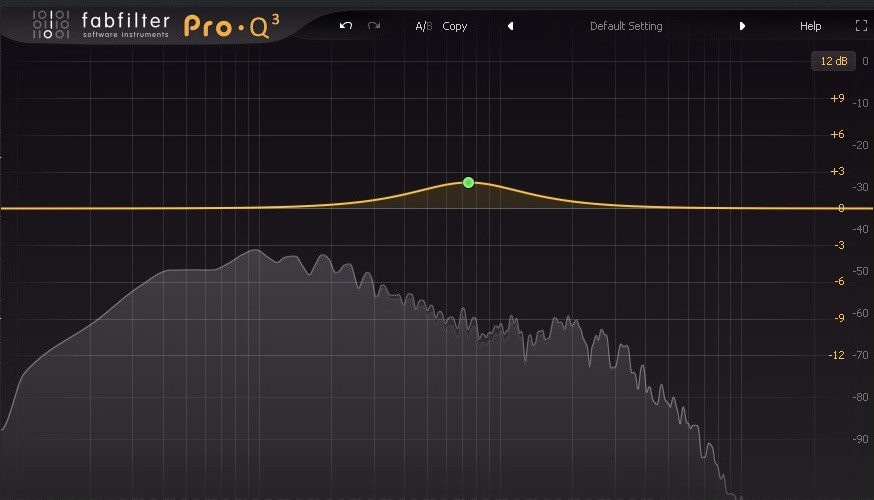
The best frequency for punchy bass is subjective, but a common approach is to focus on the lower midrange and upper bass frequencies.
Boosting around 80 Hz to 120 Hz can add a solid foundation to the bass without overwhelming other instruments.
Experiment with narrow cuts or boosts around 500 Hz to 800 Hz to control the presence and attack of the bass, depending on the mix context.
Equalizing DI and Amp Bass Tracks
When it comes to achieving punchy bass tones, equalization plays a crucial role in shaping the sound.
For DI bass tracks, focus on the low-end frequencies first.
Use a parametric equalizer to boost around 60-80 Hz to add weight to the bass without muddiness.
To enhance the attack and presence, apply a narrow cut at around 400 Hz to reduce any boxiness.
Additionally, gently boost around 1 kHz to add clarity and definition to the midrange.
For amp bass tracks, emphasize the character of the amplifier by boosting around 100 Hz to 200 Hz.
Adjust the presence by boosting or cutting at 800 Hz to 1 kHz, depending on the desired warmth or aggression.
Clarity - Finding the Sweet Spot
Clarity is paramount in achieving a punchy bass sound.
To enhance clarity, emphasize the upper harmonics with a gentle boost around 3 kHz to 5 kHz.
This helps the bass cut through the mix without sounding harsh.
If needed, make slight adjustments to the high frequencies around 7 kHz to add air and sparkle to the bass sound.
Live Bass EQ Settings
For live bass EQ settings, simplicity and quick adjustments are key.
Start by attenuating any extreme low-end rumble below 40 Hz using a high-pass filter.
Boost around 80 Hz to add warmth and fullness to the bass.
To avoid muddiness, apply a narrow cut around 250 Hz if the bass competes with other instruments.
Enhance the presence and definition by gently boosting around 1 kHz to 2 kHz.
Lastly, apply a high shelf cut above 5 kHz to control any excessive brightness that may arise from live sound systems.
FAQ:
Do you need to EQ the bass?
Yes, EQing the bass is essential. EQ helps shape the bass sound by adjusting frequencies.
Boosting certain frequencies adds depth and punch, while cutting unwanted frequencies reduces muddiness and interference with other instruments.
Proper EQing enhances clarity by defining the bass in the mix and making it stand out.
Whether for recorded tracks or live performances, using EQ on bass ensures a balanced and professional sound.
What is the best EQ for worship bass?
The best EQ for worship bass depends on the specific bass tone desired and the overall worship environment.
Focus on boosting the lower midrange for warmth and fullness. Emphasize the upper midrange to enhance the bass’s presence and definition.
Gentle boosts in the high frequencies can add clarity. Tailor the EQ to complement the worship band and venue acoustics.
You can use the cheat sheet above as a guide.
Remember to keep the bass sounding balanced and supportive of the worship atmosphere, allowing it to blend harmoniously with other instruments and vocals.
